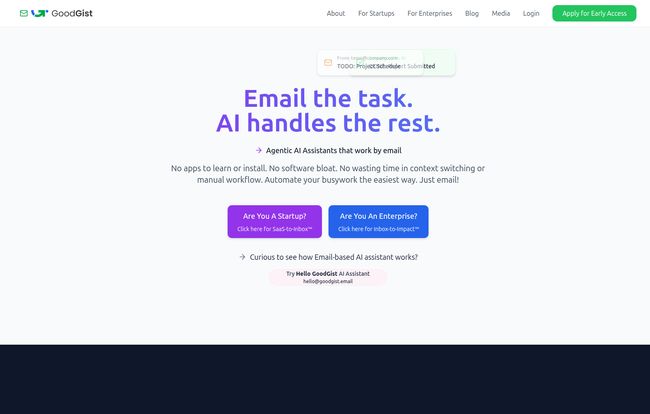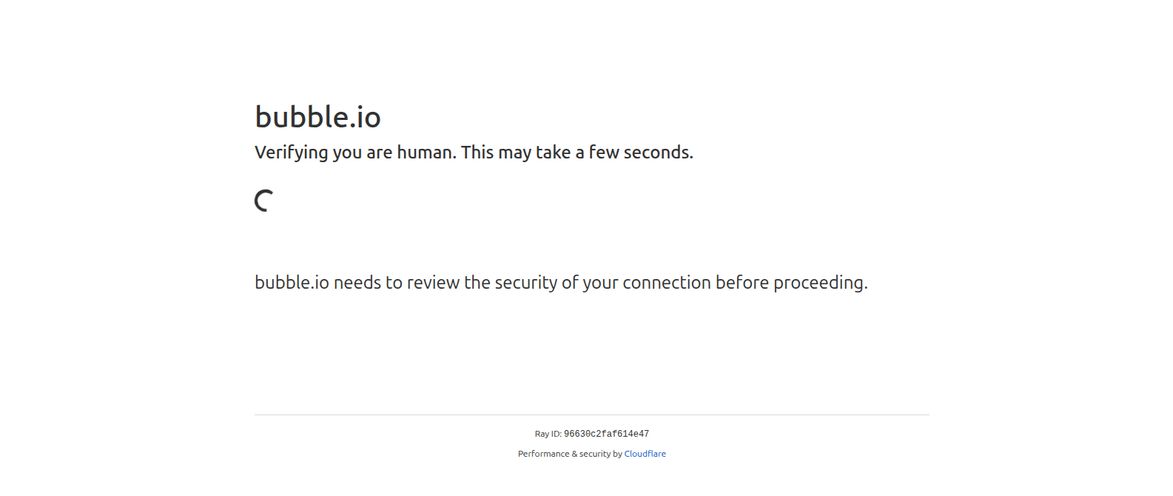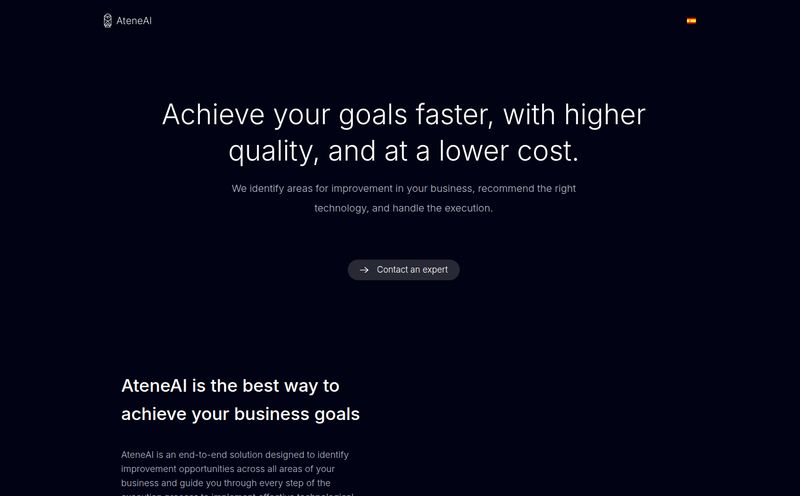How much of your workday is spent on tasks that make you feel like a highly-paid, over-caffeinated robot? You know what I'm talking about. The endless cycle of downloading a report from one system, finding the three relevant numbers, plugging them into a spreadsheet, cross-referencing another document, and then firing off the same email you’ve written a thousand times. It’s the digital equivalent of working on an assembly line. And frankly, it's draining the life out of us.
For years, we've been promised that automation would save us. And tools like Zapier or Make have been godsends, don't get me wrong. They're great for simple, linear tasks: if this happens, then do that. But what about the messy stuff? The tasks that require a bit of… thinking? That’s where the hype train for “Agentic AI” has pulled into the station, and a new platform called GoodGist is claiming to be the conductor.
I spend my days eyeballs-deep in SEO, traffic generation, and CPC trends, so anything that promises to claw back precious hours from repetitive grunt work gets my attention. So I decided to take a peek under the hood.
So What Is GoodGist, Really?
On the surface, GoodGist is an AI platform for workflow automation. But that's like calling a smartphone a pocket calculator. It misses the point. The core idea, as I see it, isn’t just about automating a single action. It’s about building and orchestrating a team of specialized AI agents to carry out a complex, multi-step process for you. Their homepage puts it bluntly: “Email the task. AI handles the rest.” A bold claim, but it gets the imagination going.
Think of it this way. Instead of just setting up a simple trigger-action rule, you're acting like a project manager. You write out the instructions for a project—say, “Review all new customer support tickets from this week, identify any that mention ‘billing issues’, extract the customer name and ticket number, summarize the complaint, and add it to our priority Asana board.”
GoodGist then generates the AI agents needed to execute that entire flow. One agent to read the tickets, another to identify keywords, a third to extract the data, and a fourth to interface with Asana. You’re not just automating a task; you’re automating a whole system of tasks. Its a pretty compelling idea.

Visit GoodGist
The Magic Word is “Agentic”
You’re going to hear the term “agentic AI” a lot more in the coming months. It’s the next evolution from the generative AI we’ve all been playing with. While a tool like ChatGPT can write you an email, an agentic system can take the goal of “send a follow-up email to all new leads” and then figure out the steps to do it: access the CRM, identify the new leads, compose the email, personalize it, and send it. It has agency. It can plan and execute.
This is where GoodGist is planting its flag. Their features point to a system that’s less about rigid, pre-programmed paths and more about dynamic problem-solving. It’s the difference between a toy train on a fixed track and a self-driving car that can navigate a new city. This is why their focus on a “Multi-Agent AI Builder” is so intriguing. You're not just getting one bot; you're getting a whole crew.
Who Is This Actually For? Startups and Enterprises
I noticed GoodGist splits its pitch into two camps, which is smart. The needs are wildly different.
For the Scrappy Startup
If you're a startup, you're constantly fighting to do more with less. You don't have a 20-person data entry team or an army of developers to build internal tools. GoodGist positions itself as the great equalizer. It allows a small, agile team to automate sophisticated processes that would typically require a massive headcount or expensive custom software. This is about boosting productivity and moving faster than your well-funded competitors.
For the Corporate Giants
Enterprises have different headaches. They care about security, compliance, and scale. The mention of a Private Cloud (Self-hosted) Option and White-labeling is music to the ears of any IT director. They can run the whole system within their own secure environment. Plus, the emphasis on “full visibility and auditability” is huge. In a world where AI can feel like a mysterious black box, giving enterprises a full, step-by-step log of what the AI did is absolutely critical for trust and compliance.
A Few Features That Stand Out
I scrolled through their feature list, and a few things jumped out at me as genuinely different, not just marketing fluff.
First, the Natural Language (No-Code) Instructions. This is the holy grail. The biggest barrier to automation has always been the technical skill required. By allowing users to just describe the workflow they want, you open the door to non-technical experts—the people who actually know the process inside and out—to become the architects of their own automation. You don't need to speak Python; you just need to speak plain English.
Second, the Human-in-the-Loop Execution. Let's be real, nobody is ready to hand over the company credit card to a fully autonomous AI just yet. GoodGist seems to understand this. This feature lets you build checkpoints into your workflow where a human has to approve a step before the AI continues. This, combined with their focus on Deterministic Execution (meaning the workflow follows a predictable, non-random path), builds a massive amount of trust. You get the efficiency of AI with the safety net of human oversight.
The Potential Hurdles
Okay, it's not all automated perfection. Like any powerful tool, it's not a magic wand. Based on their own materials and my experience with similar platforms, there are a few things to keep in mind.
- Clarity is Everything: The effectiveness of the entire system hinges on how well you can write your instructions. The old programming adage of “garbage in, garbage out” applies here more than ever. A vague or poorly defined workflow will lead to a confused team of AI agents.
- Upfront Investment: This is not a 'flick a switch and it works' solution. You're going to have to invest time in mapping out your processes and configuring the initial workflows. The payoff is huge, but it won't happen on day one.
- There's Still a Learning Curve: While it's “no-code,” it’s not “no-learning.” You'll need to wrap your head around the concepts of agentic workflows and how to best structure your commands for the AI.
What's the Deal with GoodGist's Pricing?
So, the million-dollar question: what does it cost? I went looking for a pricing page, and… well, I hit a 404. And I have to say, it was a pretty charming 404 page: “Looks Like Our AI Got A Bit Too Intelligent.” A nice touch that shows they have a personality.
But the lack of a public pricing page tells me something. GoodGist is likely not selling a simple tiered SaaS product at the moment. The prominent “Apply for Early Access” button suggests a more consultative approach. They probably want to talk to potential customers, understand their use case, and price it accordingly. This is common for powerful, enterprise-focused platforms. It's not a red flag, but it does mean you can’t just swipe a credit card and get started. You'll need to have a conversation first.
Frequently Asked Questions about GoodGist
1. What is agentic AI and how is it different from normal automation?
Think of normal automation (like Zapier) as a set of dominoes. You push one, and it follows a single, pre-determined path. Agentic AI is more like a human assistant. You give it a goal, and it can reason, plan, and execute a series of steps to achieve that goal, even adapting to unexpected issues.
2. Do I need coding skills to use GoodGist?
No. The platform is built around a no-code interface where you provide instructions in natural language (like plain English). The key skill is being able to clearly and logically describe the workflow you want to automate.
3. Is GoodGist secure for sensitive business data?
For enterprises, they offer a private cloud, self-hosted option. This means the entire platform can run within your company's own secure infrastructure, so your sensitive data never has to leave your control.
4. How does the “Human-in-the-Loop” feature work?
It allows you to set specific points in a workflow where the AI must pause and wait for a human to review its work and give approval. This ensures quality control and prevents the AI from making critical decisions without oversight.
5. Is GoodGist suitable for a small business?
Yes, it appears so. While they have an enterprise solution, the “For Startups” section on their site clearly targets smaller, more agile businesses looking to increase productivity and automate processes without a large team.
6. How does GoodGist improve over time?
The platform includes a feature for continuous learning via user feedback. This means as you correct or guide the AI agents, they learn from those interactions to perform the tasks better in the future.
Final Thoughts: Is GoodGist Worth Your Time?
Look, the AI space is noisy. There’s a new “game-changing” tool every single week. But GoodGist feels a little different. It’s not just another AI chatbot or content generator. It's tackling a far less glamorous but arguably more valuable problem: the broken, inefficient internal processes that plague almost every business.
The move toward agentic AI is real, and it has the potential to fundamentally change how we work. The idea of becoming a conductor of an AI orchestra, rather than playing every instrument yourself, is incredibly powerful. If you're a business owner or team lead who feels like you’re drowning in manual tasks, I think getting on their early access list is a smart move. It might just be the thing that finally lets you and your team get back to doing the work that actually matters.
Reference and Sources
- GoodGist Official Website
- Sequoia Capital on Generative AI Agents - A good primer on the concept of AI agents.



